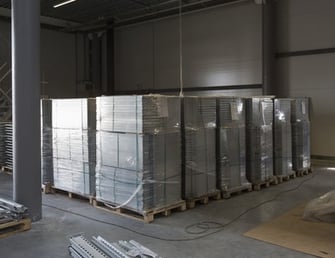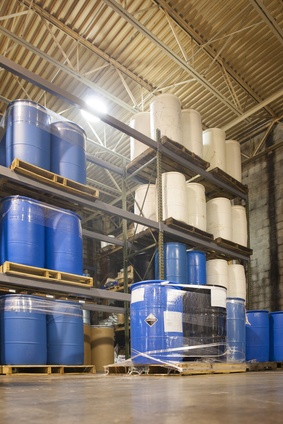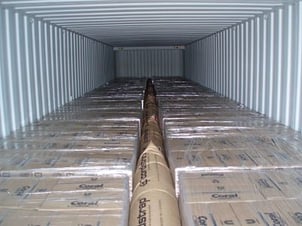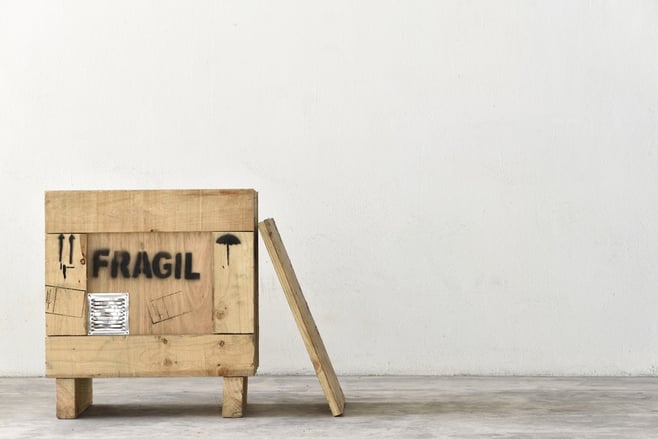You have parts, products, and materials that need to get out the door in a hurry. Perhaps you’re an industrial company shipping to your customer. Or maybe you’re managing a large-scale industrial project that has tight deadlines. You need to ship your products and materials and you need to do it quickly.
You don’t have time to research many different types of packaging and materials. After all, a crate is a crate, right?
Not quite. The material you use for your industrial packaging can have a big impact on quality, efficiency, and your bottom line. The wooden crate is commonly used in the industrial world, and there are instances where it makes the most sense. However, it’s not the only option. In fact, there are a wide range of materials that could be better suited for your project than wood.
Below is a quick summary of some of the most popular packaging materials for industrial companies. If you suspect that your current packaging isn’t the best fit for your parts or products, consider some of the following alternatives.
Wood
 The wooden crate is overwhelmingly the most popular type of package in the industrial world. That’s for good reason. Wood is typically a very strong material, and it can be built and designed into a crate that can hold even the heaviest industrial products.
The wooden crate is overwhelmingly the most popular type of package in the industrial world. That’s for good reason. Wood is typically a very strong material, and it can be built and designed into a crate that can hold even the heaviest industrial products.
Crates can also help you pack more efficiently into a cargo truck or container, as they can easily stacked to maximize space. And if you plan on reusing your crates, wood can be a great option.
However, there are a few reasons not to use wood:
-
A wooden crate can be vulnerable to moisture, heat, and other elements. That could present a problem is you have parts or products that are sensitive to that kind of exposure.
-
Disposing of the crates after use can be a challenge. If you’re not going to reuse the crate, you could have a substantial amount of wood that you have to dispose of. That’s an additional task and level of complexity that you may not want to add into your process or project.
-
Finally, if your company is environmentally conscious and if sustainability is important to you, wood may not be the best option. Obviously, the material is sourced from a natural element. Unless you’re using recycled wood or reusing your crates, wood may present an environmental challenge that contradicts a goal of sustainability.
Metal
Metal offers a number of important benefits as a packaging material. The first is that it is highly effective as a barrier, preventing the intrusion of moisture, light, heat, and other potentially dangerous elements. If your parts or products have little tolerance for element exposure, metal could be a good choice.
Most metals — like aluminum, steel, and tin — can also be easily recycled. Even if you will only use a container one time, you can quickly transfer it to a recycling facility so you can meet your sustainability objectives. Or your packaging partner can handle that process for you so you can focus on your core skills and processes.
 One of the biggest challenges with metal is finding a packaging partner who can build quality crates and packages. The packager likely needs to have a fabrication process in-house so they can quickly design and build metal packaging exactly to your specifications. Not all industrial packaging companies have that capability.
One of the biggest challenges with metal is finding a packaging partner who can build quality crates and packages. The packager likely needs to have a fabrication process in-house so they can quickly design and build metal packaging exactly to your specifications. Not all industrial packaging companies have that capability.
Also, depending on the unique needs of your product, a metal package may need a bit of engineering. For instance, you may be wondering which type of metal provides the best protection in the most cost-effective manner. If your packaging partner doesn’t have knowledgeable engineers on staff to analyze that issue, they may not be able to use metal to its fullest capabilities.
Metal can be a very effective industrial packaging material. However, you need to work with a packaging partner who has the fabrication capabilities and the engineers to design and build the right metal package for you.
Preservation Chemicals
The external package material can provide an initial level of protection against the elements, but you may also wish to add an internal barrier. One way to do that is through preservation chemicals.
 Preservation chemicals are commonly used in food packaging, but they can also be beneficial for industrial containers. For example, you may may use a mix of chemicals if your aim is to maintain a constant level of air pressure in the container. There are a number of different types of paints and chemical barriers that can be applied to the interior of the crate to keep elements out. Or desiccants — small packs or canisters filled with chemicals — can be used to ensure dryness.
Preservation chemicals are commonly used in food packaging, but they can also be beneficial for industrial containers. For example, you may may use a mix of chemicals if your aim is to maintain a constant level of air pressure in the container. There are a number of different types of paints and chemical barriers that can be applied to the interior of the crate to keep elements out. Or desiccants — small packs or canisters filled with chemicals — can be used to ensure dryness.
While chemicals can be a beneficial addition to your crate to protect quality, it’s important that the right chemicals are used in the right situations. There are a number of factors that should go into the decision to use preservation chemicals, such as the type of container, the nature of the item in the package, and variables while in transit, such as temperature and smoothness of the ride.
An experienced packaging partner can analyze your crate and help you determine whether chemicals are appropriate and which chemicals are right for you. Again, not all packaging companies have this knowledge or capability. Make sure you’re working with a partner who has used a wide range of preservation chemicals on past projects.
Dunnage
It’s a problem every industrial company worries about. You have parts and products that are manufactured with precision to meet detailed specifications. If the part shifts while in transport, it could bang against the side of the crate, causing damage. Even the smallest ding or dent could make the part unusable.
 Dunnage is an effective way to eliminate the possibility of shifting within the crate. Whether it’s loose foam packaging or sealed, air-filled bags, dunnage can be used to fill empty space within an individual crate or within an entire cargo container.
Dunnage is an effective way to eliminate the possibility of shifting within the crate. Whether it’s loose foam packaging or sealed, air-filled bags, dunnage can be used to fill empty space within an individual crate or within an entire cargo container.
The question is one of cost efficiency. While dunnage is an effective tool, it also represents unused space in a crate or container. What is the most cost-effective type of dunnage to use for your project? And how can a project be packed in a way that minimizes the need for excessive dunnage?
Your packaging partner should be able to answer these questions and more for you. An experienced industrial packager doesn’t simply turn to dunnage as a solution. Rather they look at the big picture — from package design to crate stacking and more — to develop strategies that minimize shifting in transit. Then they use dunnage only to address those risks that can’t be managed in any other fashion.
There are any number of packaging materials that can be used in an industrial setting to protect your materials. Your job is to manage your project or production process, not sort through an assortment of packing materials. Partner with an industrial packaging company that can help you make these decisions. They can analyze your needs and objectives, and then recommend the strategy that works best for you.







Let Us Know What You Thought about this Post.
Put your Comment Below.